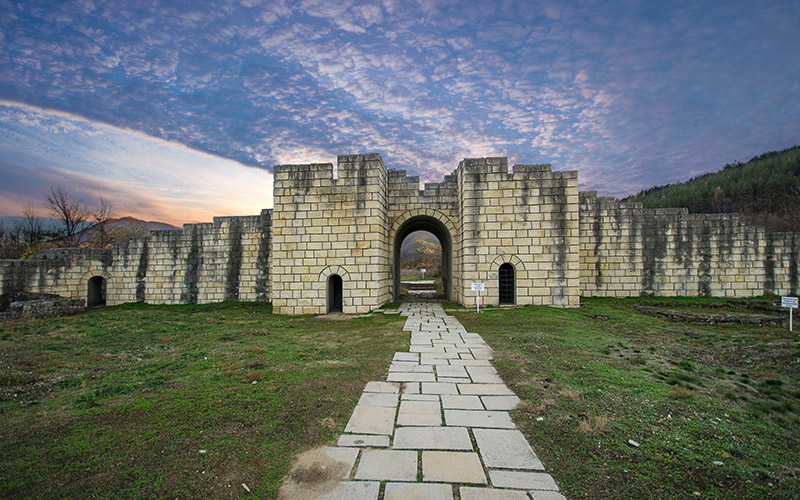Varna, located on the coast of the Black Sea in Bulgaria, is a city of great historical and cultural significance. Known for its beaches and resorts, Varna has attracted tourists and traders for centuries. However, few knew that beneath the surface of this coastal city lay an archaeological secret that would change the understanding of European history.

The Unexpected Discovery
In late autumn of 1972, during a construction project in Varna’s industrial area, a worker stumbled upon something unexpected while digging to install power cables. What he found was not just a piece of copper, but an ancient artifact that led to the revelation of a lost civilization. The discovery was taken to the local museum, where archaeologists, led by Alexander Minchev, began excavating the area, uncovering what would become one of the most significant archaeological finds of the 20th century.
The Varna Cemetery – The Discovery Site
The excavations revealed an ancient cemetery containing over 300 tombs dating back to approximately 4,500 B.C. This cemetery, now known as the Varna Cemetery, provided an unprecedented insight into an advanced and prosperous civilization that inhabited the region during the Copper Age.
Tomb 43 and Its Treasures
Among the many tombs discovered, Tomb 43 stood out as the richest and most intriguing. It contained the remains of a man aged about 45 to 50, buried with an impressive amount of gold artifacts. Among the most notable items were a gold penis sheath, symbolizing male sexual potency and fertility, and a gold scepter, which combined political and sexual symbolism. These objects, along with other artifacts found in the tomb, indicated not only wealth but also a high social status of the individual buried there.
The Advanced Civilization of Varna
The artifacts found in the Varna Cemetery indicate that this civilization possessed a considerable level of sophistication and prosperity. Copper tools, elaborate jewelry, and gold ornaments reveal that the inhabitants of Varna had advanced skills in metallurgy and craftsmanship. As archaeologist J. Chapman notes in his book “The Vinča Culture of South East Europe”: “The findings at Varna demonstrate a society that not only mastered metallurgy but also appreciated aesthetics and ostentation.” The discovery of Varna challenges the traditional view that prehistoric societies were egalitarian. The concentration of valuable artifacts in a few tombs suggests the existence of a well-defined social hierarchy. Only eight of the 300 tombs contained a significant amount of gold, indicating a concentration of power and wealth among an elite. This evidence of social differentiation is crucial for understanding the complexity of ancient civilizations. As historian David Anthony highlights in “The Horse, the Wheel, and Language”: “The discovery at Varna reveals a society where wealth and status were clearly defined, challenging the notion of egalitarian prehistoric communities.”
The Impact of the Discovery on European History
The discovery of Varna had a profound impact on historians’ understanding of ancient Europeans. Before this discovery, it was believed that prehistoric societies in Europe were relatively simple and egalitarian. However, the findings at Varna show that complex societies with well-defined social hierarchies and advanced skills in metallurgy and craftsmanship existed long before the rise of the great civilizations of the Middle East and the Mediterranean.
Comparisons with Other Ancient Civilizations
The parallels between Varna and other advanced civilizations of the time are remarkable. For example, the wealth and sophistication of the artifacts from Varna can be compared to findings at sites such as Ur in ancient Mesopotamia and the royal tombs of Mycenae in Greece. These comparisons suggest that Copper Age civilizations were more interconnected and advanced than previously thought. As archaeologist Colin Renfrew observes in “The Emergence of Civilization”: “The discovery of Varna forces us to reconsider the chronology and complexity of early European societies.”
The Legacy of Varna
The discovery of the Varna Cemetery is one of the most significant of the 20th century, not only for the value of the artifacts found but for what it reveals about the society that created them. It shows us that even in prehistory, there were complex societies with social hierarchies and advanced technological skills. The archaeological importance of Varna is undeniable, and the discovery continues to influence the study of ancient civilizations in Europe and beyond.
The story of Varna teaches us about the fragility and resilience of civilizations. The society of Varna, with its wealth and sophistication, eventually disappeared, possibly due to environmental or social changes. This lesson is relevant to us today, in a world where change is constant and civilizations continue to face complex challenges. As Jared Diamond reflects in his book “Collapse”: “Studying the past helps us understand the challenges of the present and plan for a more sustainable future.”
The lost civilization of Varna, with its treasures hidden beneath the Black Sea, continues to captivate and inspire historians, archaeologists, and enthusiasts of ancient history. Its discovery has not only enriched our knowledge of the past but also offers valuable lessons about the complexity and resilience of human societies.